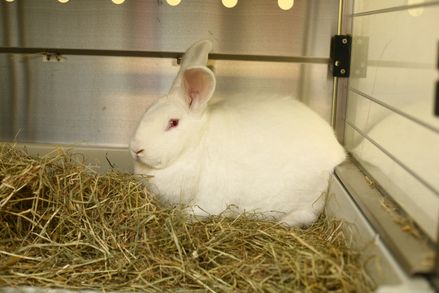Mild procedures may cause short-term mild pain, suffering or distress and/or minor changes in well-being or condition. They can include:
- anaesthesia
- non-invasive imaging, like an MRI scan
- short-term social isolation
- taking a blood sample
- superficial surgical procedures
Mild procedures account for over a third of all procedures. See our statistics page for more detailed information.
This video shows animal technologists how to cut small notches in a mouse ear in order to identify it. It is a training video produced by Imperial College London.
Blood sampling
This is another training video prepared by imperial College London to illustrate how to take a drop of blood, a blood sample, from mice and rats. You might like to compare the handling and other aspects of this procedure with the older video below.
This video shows a rat being restrained and having a blood sample taken from a vein in the tail. There is no sound.
Blood sampling is one of the most common procedures performed on laboratory animals. From blood samples, researchers can take a wide range of measurements, from the presence of viruses to the activity of the immune system to changes in blood sugar levels.
More video footage of other common procedures being conducted can be found on the Procedures With Care website, which is aimed at training researchers on how to perform these procedures while causing minimal harm and distress to the animal. For example:
- Subcutaneous injection in the rat
- Oral gavage in the mouse (passing a tube from an animal's mouth to its stomach to administer a substance)
Generating antibodies using a rabbit

"This involves catching and restraining the rabbit and giving an injection of a substance that will cause a slight immune reaction (but will not cause sickness). One of the rabbit's ears is slightly warmed up to make the veins stand out so that it will be easier to do the injection. Later blood samples will be taken at intervals and the antibodies extracted from the blood for use in research. Rabbits are sometimes housed for months or years, and blood samples were taken every couple of months."
Example taken from Openness on Animal Research Dialogue.



